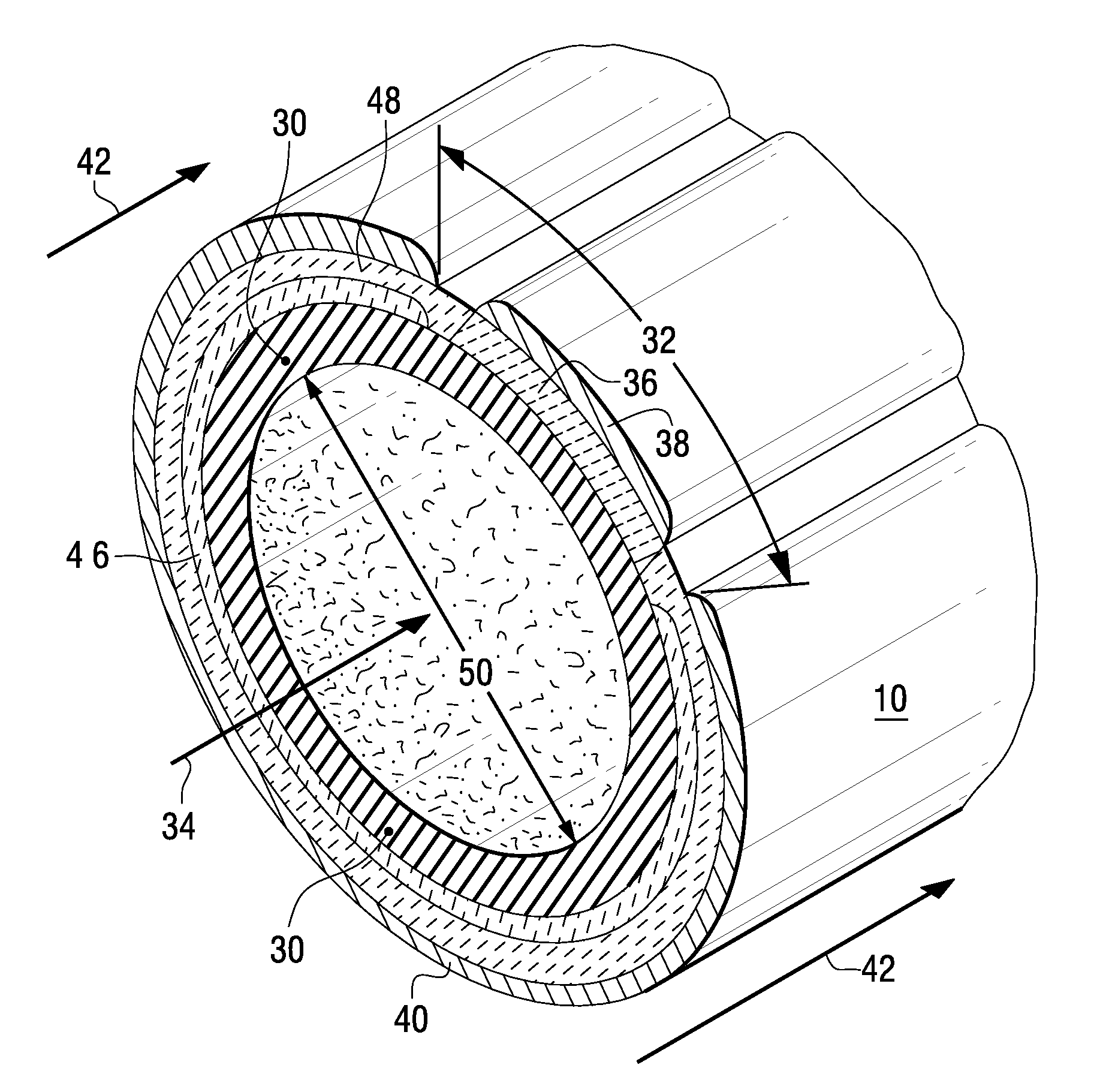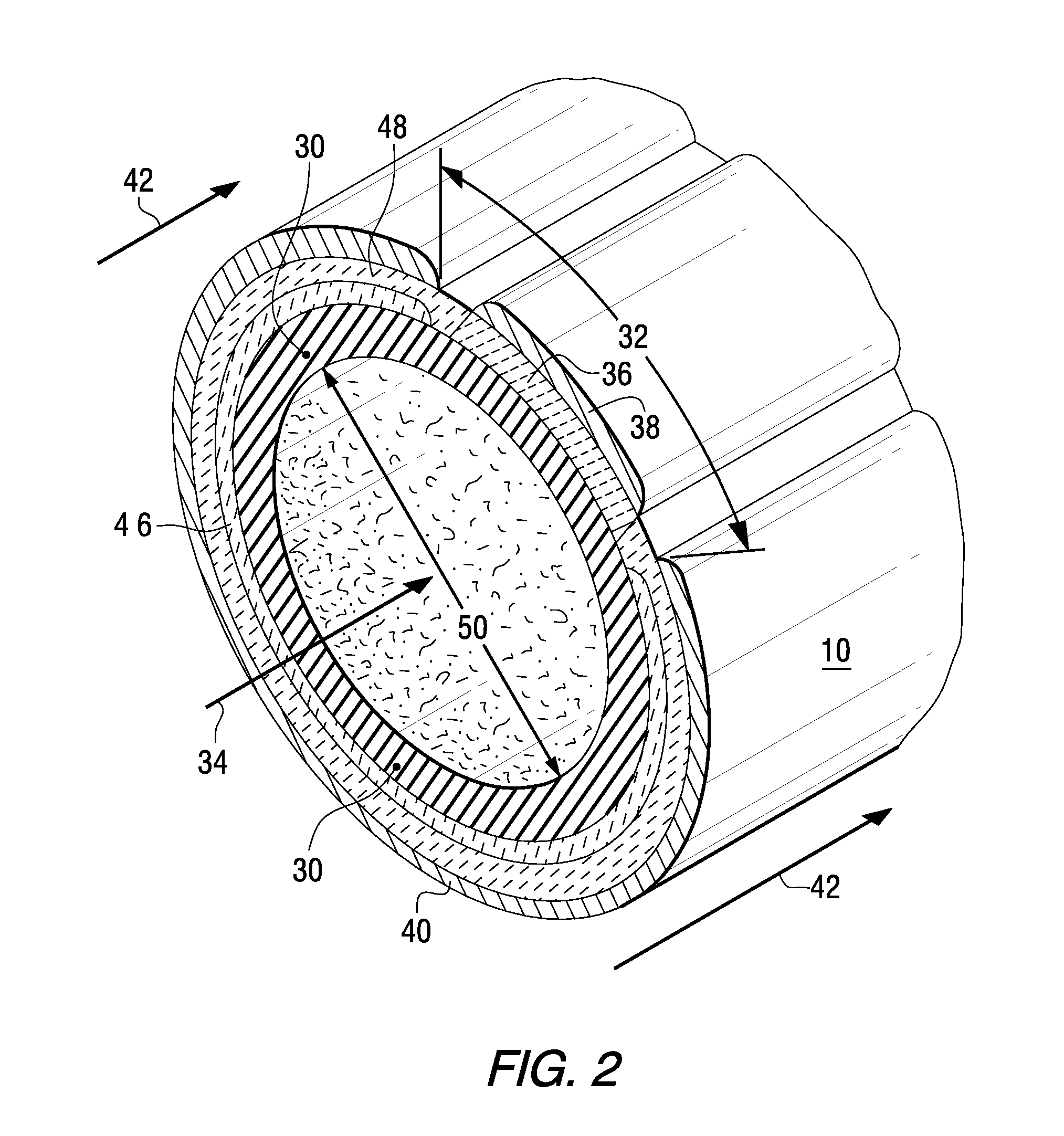Tubular Solid Oxide Fuel Cells With Porous Metal Supports and Ceramic Interconnections
a technology of tubular solid oxide fuel cells and porous metal supports, which is applied in the manufacture of cell components, final products, electrochemical generators, etc., to achieve the effect of reducing cost, reducing material or production costs, and driving dramatic cost savings
- Summary
- Abstract
- Description
- Claims
- Application Information
AI Technical Summary
Benefits of technology
Problems solved by technology
Method used
Image
Examples
Embodiment Construction
[0035]Referring now to FIG. 2, the preferred configuration of this invention is based upon a solid oxide fuel cell system wherein a flowing gaseous fuel, such as hydrogen, carbon monoxide or unreformed hydrocarbon gases, is directed over the outside of the cell, axially in the embodiment of FIG. 2 in the direction shown by fuel arrow 42. An oxidant, such as air or O2, is directed through the inside of the cell, as shown by oxidant arrow 34. Oxygen molecules pass through porous, very thin 0.1 mm to 1.0 mm, preferably 0.10 mm to 0.35 mm metal support tube 30 and thin, porous electrically conductive ceramic air electrode structure 46, which is 0.010 mm-0.2 mm, preferably 0.010 mm to 0.050 mm thick; and are converted to oxygen ions which pass through solid oxide ceramic electrolyte 48, which is 0.001 mm-0.01 mm thick, to combine with the fuel at a fuel electrode 40. Thus, many component layers in this invention are very thin layers, down to micro films. As applied to fuel cells, for exa...
PUM
| Property | Measurement | Unit |
|---|---|---|
| temperature | aaaaa | aaaaa |
| tensile strength | aaaaa | aaaaa |
| thickness | aaaaa | aaaaa |
Abstract
Description
Claims
Application Information
 Login to View More
Login to View More - R&D
- Intellectual Property
- Life Sciences
- Materials
- Tech Scout
- Unparalleled Data Quality
- Higher Quality Content
- 60% Fewer Hallucinations
Browse by: Latest US Patents, China's latest patents, Technical Efficacy Thesaurus, Application Domain, Technology Topic, Popular Technical Reports.
© 2025 PatSnap. All rights reserved.Legal|Privacy policy|Modern Slavery Act Transparency Statement|Sitemap|About US| Contact US: help@patsnap.com



